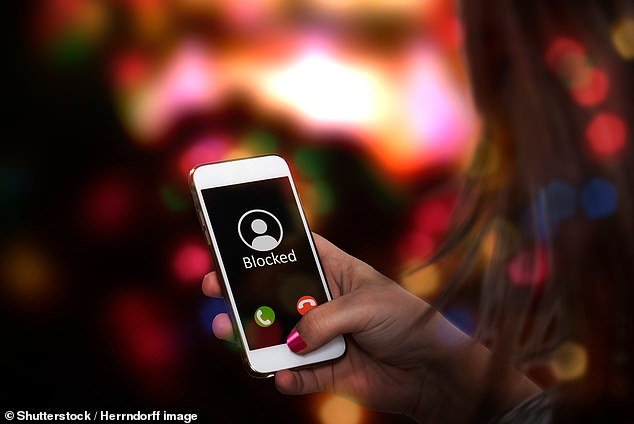The Daily Observer London Desk: Reporter- John Furner
A woman has shared her story about being cyberstalked by her estranged husband in hopes of saving others from the same fate.
Jennifer, whose name has been changed for privacy, told that her nightmare began when she started receiving strange notifications stating her social media accounts were accessed from unrecognizable locations.
‘I quickly made sure to block my stalker on social accounts and set them to private, as well as those close to him who may unknowingly feed information to him,’ she said.
‘It was frightening not to feel that I could communicate in the manner I typically do. I am now very aware of what information I share on the web to minimize my risk.’
She said using privacy tools such as blocking and minimizing the amount you share online is critical.
The signs of cyber-stalking can be subtle (Shutterstock)
Cyberstalking affects millions of Americans, with three million people stalked using technology in 2019, according to the U.S. Department of Justice.
The alarming fact that too few people know is that 67 percent of cyberstalking victims know their stalker, according to U.S. Government research.
Darren Guccione, CEO and co-founder of Keeper Security, told, ‘Our digital and physical worlds are more intertwined than ever before.
‘We are increasingly seeing the ramifications of online behavior play out in real life, and the impacts from malicious actions can be devastating to victims.’
Guccione and Jennifer said that there are several warning signs that you might be being cyber-stalked.
Password reset requests
If you ever receive a password reset request for a social media, email or even banking account and you didn’t initiate it, be suspicious, Guccione said.
Cuccione said, ‘This could be a sign that someone is trying to change your passwords to lock you out of your accounts and gain control of personal or financial information.’
‘If an attacker can take over those accounts, the damage can be far-reaching and severe.’
People pretending to be you
A classic sign of cyber-stalking is if you find profiles pretending to be you on social media – abusers can use these fake profiles to spread unpleasant stories or harass friends.

People pretending to be you online can be a sign you are being cyber-stalked
Guccione said, ‘If you believe a user has created new accounts for the purpose of harassing you, you can block those accounts too, and report the user, as most websites have a policy against this behavior.’
People sharing your own information with you
Guccione said that if people on social media are keen to share information that only you or people close to you should know, that can be a clear sign that this is a fake profile.
If you’re being cyber-stalked, you should ‘lock down’ your social media profiles as much as possible and notify customer support.
Sign-ons from unusual locations
Jennifer found that she received notifications saying that her account had been logged into unusual places – then she realized what those places were.
She told, ‘I started receiving notifications of unrecognized login attempts on some of my accounts.

Darren Guccione of Keeper Security said: ‘If you believe a user has created new accounts for the purpose of harassing you, you can block those accounts too, and report the user, as most websites have a policy against this behavior’
‘When I looked at where they were coming from, I discovered those logins were coming from the location of my estranged husband – sometimes from the home we used to share and sometimes from his work location.’
Unexplained packages arriving
If unwanted Amazon packages arrive at your house, for example, this is a clear sign of cyber-stalking behavior.
Cyber-stalkers want to show their victims that they have information about them (such as their address) to strike fear.
Fake profiles befriending you
Guccione said that cyberstalkers commonly create fake social media profiles to harass victims.
Most social networks have strict rules around people creating multiple fake accounts: if this happens to you, contact customer support and see if they can help.
People showing up to places you mentioned online
Guccione said, ‘Online harassment and cyber-stalking do not always remain confined to the digital world.
‘The lines can blur between cyber and physical stalking and physical security must not be neglected. Using a VPN service and disabling geo-tagging on the digital photos you share online will ensure your true location is not traceable to an abuser.



